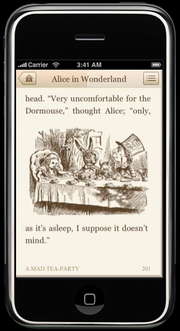Kindle clamor keeps confusing


In addition, after reading text with an iPhone 3G for several months, I wonder about the whole e-book reader category. Who needs it?
One of my neighbors, a designer of hardware interfaces for professional video editing systems, bought a Kindle a couple of months ago. He put it up for sale on eBay less than a day later. He said the hardware design was "terrible."
After borrowing and using his Kindle, I understood his rejection of the device. It presents a cluttered interface. And worse, it changed pages when I picked it up, with my fingers touching the long Previous and Next Page bars on the sides. This was his experience as well. (I notice from most publicity photos that the Kindle is held in the left hand from the lower left corner. Maybe that's the secret but that's awkward.)
In addition, I found the roller bar and its cursor track icon difficult to line up with items on the screen. And I its browser was very slow.
My neighbor appears to want to like this e-book reader category, but admits that the Kindle is a bit schizophrenic in its design. It's a reader and a music player, an Internet browser and a book platform, and comes with a grayish black-and-white screen in a color world (and no backlight either).
On the other hand, my iPhone G3 is a great handheld reader. It has a beautiful, sharp color screen, that I can use with just one hand, turning pages with my thumb. I read RSS feeds this way all the time. But these are all short pieces. What about longer documents, err, like books?
To test the iPhone with a book, I purchased Classics, a $2.99 book reader app released last week by Andrew Kaz and Phill Ryu. The program currently offers a dozen copyright-free titles, such as Alice in Wonderland, Hound of the Baskervilles and Call of the Wild, among others. The text is formatted into pages and users flip through the book by tapping the page (each "turn" is accompanied by a cute animation and sound). It doesn't scroll.
I found the text (in a serif font) to be perfectly readable. Perhaps to help deliver the concept of a classic book, the background color of the "page" is tinted a bit sepia; I wish there was a setting to control this behavior.
However, reading experts will note that Classics presents a 30-character column of text, about 5 words, which is considerably narrower than the usual newspaper column of 50 to 60 characters. Still, I found that the format worked fine on the iPhone.
When the Kindle was announced, I questioned whether the e-book reader could supplant the market for printed books. Now, after using the Kindle, I still don't see how the current generation of readers can overcome the advantages of printed hardcopy: its robust, unbreakable nature; high-resolution text and battery life (unlimited).
And after successfully using the iPhone as a book reader, it appears that the Kindle now has two established technologies to overcome. Good luck.